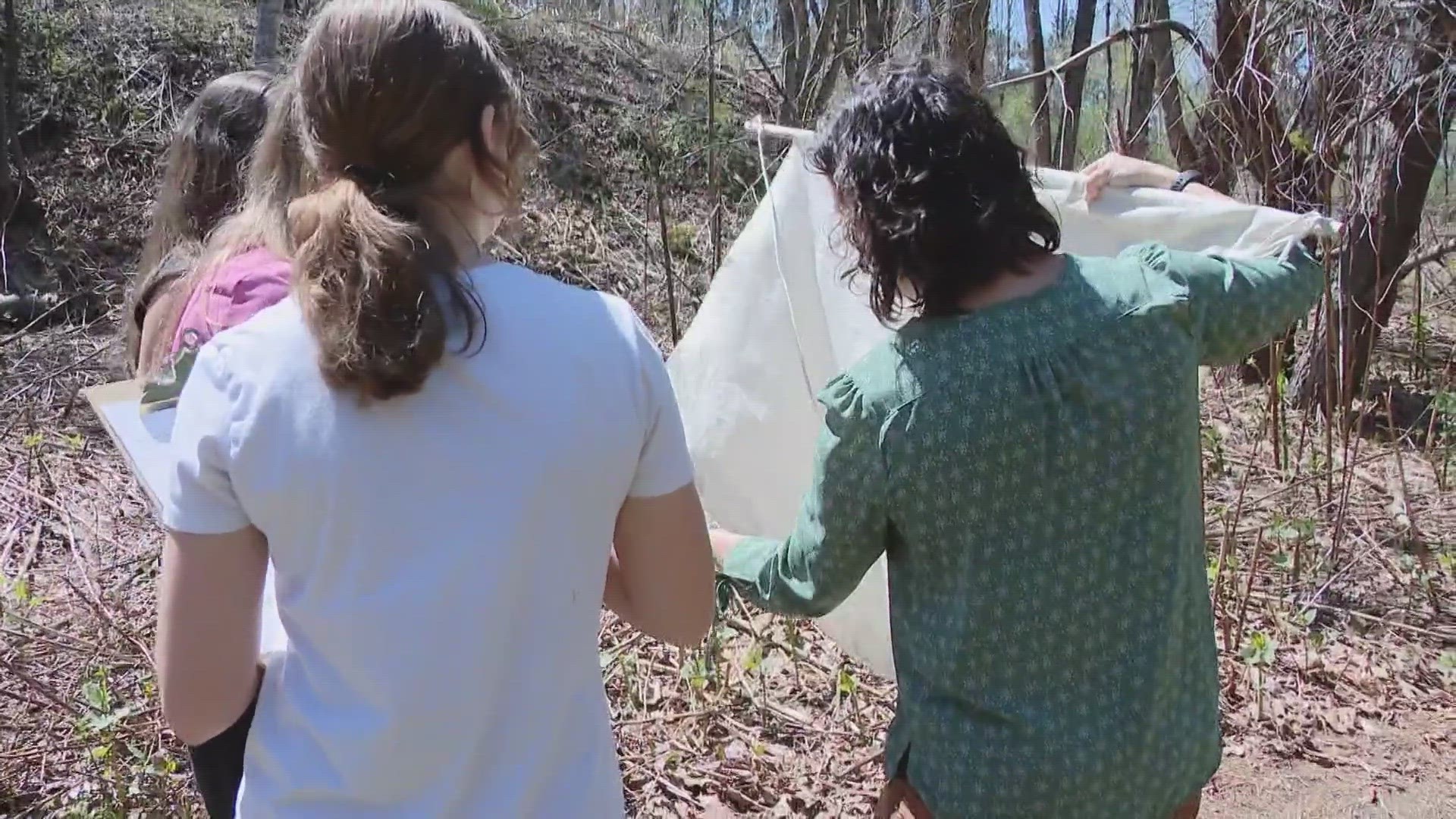MAINE, Maine — As we wrap up tick week, we are focusing on how Maine's next generation is learning new skills and information to better protect themselves against ticks over their lifetimes.
That knowledge is critical. Health experts say children between the ages of 5 and 9 are at the greatest risk for Lyme and other tickborne diseases. Rolling in the grass and playing outside puts them more at risk of getting an embedded tick.
At Spruce Mountain Middle School in Jay, this sixth-grade science class is all too familiar with ticks.
"How many of you guys have ever been bit by a tick? Whoa, that's a lot," Adina Bercowicz exclaimed.
Bercowicz is the founder and executive director of LymeTV, a nonprofit that works to educate the world about Lyme disease and other dangerous tick-borne illnesses. As part of LymeTV's Tick JEDI school health program students from K-12 are learning important tools to protect themselves, including how to safely remove a tick and do daily tick checks.
"Put your clothes on high heat [in the dryer] for 20 minutes. It'll kill the ticks on there, and go straight to the shower," Berkowicz explained to the class.
Bercowicz suffers from late-stage neurological Lyme disease, multiple co-infections that later caused brain damage, and other diseases all from a tick bite.
"Lyme disease can affect any parts of your body, neurologically, and affect your skin and GI system," Berkowicz told students.
She occasionally makes school presentations, but the interactive curriculum is available as a free online resource to Maine teachers and nationwide. Besides workbooks and lesson plans, there is also a featured cartoon. About 4,500 students are using the Tick JEDI online program in 11 Maine counties, nine states, and one school in Canada.
Kelly Kelley teaches middle school science at Spruce Mountain. She has found as many as 30 ticks on kids after they come in from recess each year.
"A lot of them live inner-city areas here and were thinking, 'I can't get it. I don't live in the woods.' So it's been an eye-opener," Kelly explained.
Some of these youngsters know firsthand the dangers of Lyme disease.
An embedded tick left Colby Spiotta with muscle spasms. But fortunately things cleared up after being treated early with antibiotics. Quinn Johnson suffered from Lyme arthritis and still has swelling in her knee, despite treatment.
"What happened to me, it can get even worse and worse and can ruin someone's life," Johnson said.
And in southern Maine, seventh graders at Gorham Middle School are on the hunt for ticks.
Using large cloths, students drag for ticks in the leaf litter, measure the distance, and record the time of day, temperature, and habitat. Ticks that attach to the fabric are identified, collected, and preserved in small vials.
"You could ask all of my students, and they would know the difference between a dog and a deer tick," Angela Gospodarek, a seventh-grade teacher at Gorham Middle School, said.
The middle school is one of more than two dozen campuses and other sites across Maine participating in the University of Maine 4H-Tick Project. The community science program is open to K-12 students. From the classroom to the outdoors, youngsters learn about the lifecycle of ticks, habitats, species, the pathogens they transmit, and how tick migration is tied to climate change.
"We've learned how to protect ourselves from them. We've learned where we can find them," seventh-grade student Isla Rutherford explained.
The project provides supplies to collect ticks, safety information, activities, and learning resources. Educators, camp counselors, home school parents, librarians to volunteers can sign up online. Ticks collected by students are sent to the University of Maine Cooperative Extension Tick Lab.
"We get the ticks identified and tested for diseases at no cost to the educator, and that data gets sent back to the educators to share with the youth," Carla Scocchi, University of Maine Cooperative Extension 4-H youth development professional, said.
About 88 Gorham middle school students are participating in the project, 29 tick samples have been tested, and 11 were positive for the bacteria that causes Lyme.
"We've had some of the local vets and veterinarians ask us for our tick information about what we are finding here in Gorham," Gospodarek said.
Students are also learning how to keep themselves safe from tickborne diseases, especially when hunting for ticks.
"Tuck your socks into your pants, and wear protective clothing like long sleeves," seventh-grade student Grant Peters said.
Students also do tick checks when they return to the classroom and at home after being outdoors. Habits they can rely on for the rest of their lives.
The 4-H Tick Project is made possible through a partnership between the 4-H Youth Development, UMaine Cooperative Extension Tick Lab, Maine Forest Tick Survey, and members of the Learning Ecosystems Northeast partnership.

